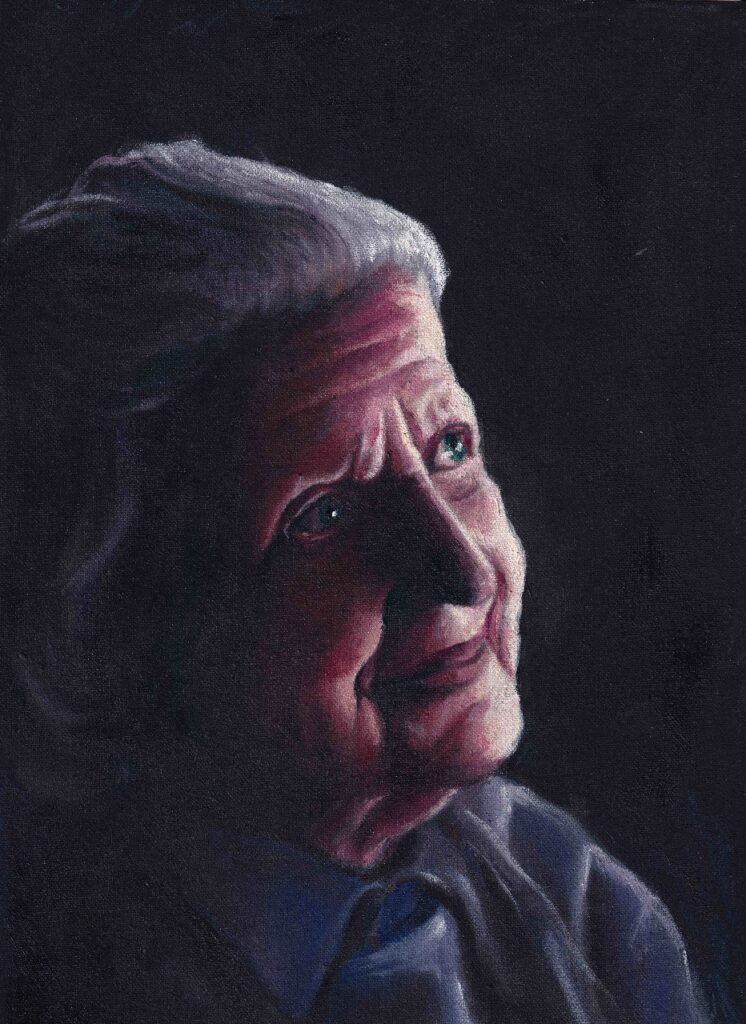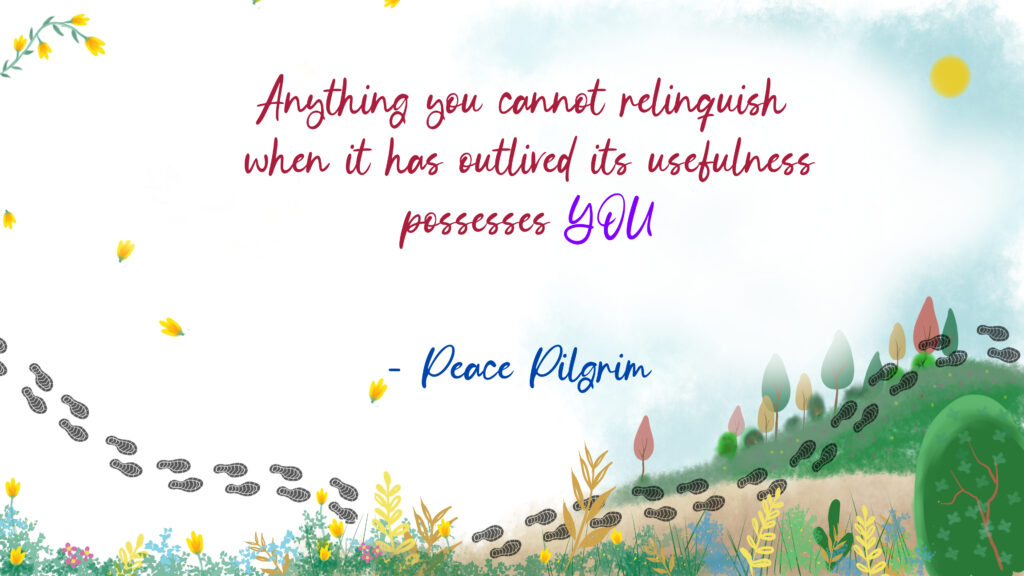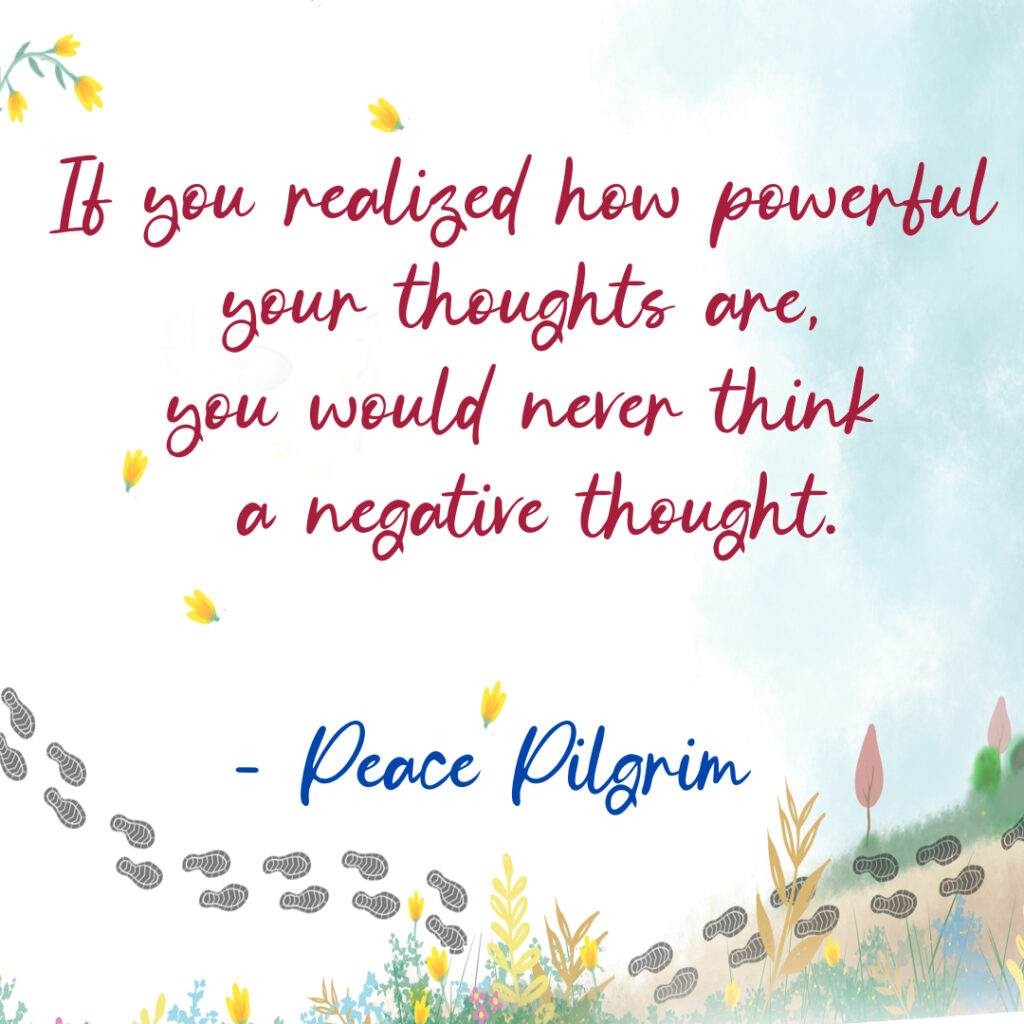About
Meet Peace Pilgrim, a woman who not only gave up all her worldly possessions but also her name, for the sake of Peace, and insisted on being simply addressed as “Peace Pilgrim”. She donned a humble blue tunic inscribed with her mission for peace, carrying nothing but —a comb and a toothbrush. And for the rest of her life of nearly 30 years, she walked her self designated pilgrimage across forests and cities, touching countless lives with her love and wisdom, inspiring others to seek inner peace and nonviolence.
Lets dive into the unbelievable journey of an ordinary woman who went onto become a truly extraordinary individual, by giving herself entirely to her cause, of Peace.
If you find this message resonates with you, and wish to dive deeper, we highly recommend her book: “Peace Pilgrim: Her Life and Work in Her Own Words“
Table of Contents
Introduction

She walked for 30 relentless years, but her walk was not for fame, not for fortune, but for an unwavering belief in peace. This is the incredible story of Peace Pilgrim, a woman who transformed her life into a remarkable mission of spreading peace across America for nearly 30 years! Curious? Ready to follow in her footsteps?
Let us dive into the unbelievable journey of an ordinary woman who went onto become a truly extraordinary individual by giving herself entirely to her cause, of Peace.

Who was Peace Pilgrim?
Mildred Norman was no different from any of us—an ordinary woman who lived a typical life in America until her forties. But then, she made a life-altering decision that would set her apart forever: she chose simplicity and began an extraordinary journey, walking coast-to-coast across the United States, spreading the profound message of peace.

With her new identity, she not only gave up all her worldly possessions but also her name, and insisted on being simply addressed as “Peace Pilgrim”. She donned a humble blue tunic inscribed with her mission for peace, carrying nothing but a comb and a toothbrush. And for the rest of her life of nearly 30 years, she walked her self-designated pilgrimage across forests and cities, touching countless lives with her love and wisdom, inspiring others to seek inner peace and nonviolence.
If this transformation wasn’t remarkable enough, consider this: she chose not to eat unless someone offered her food and sought no shelter unless it was willingly provided. Walking more than 25,000 miles, she eventually stopped counting but never stopped walking for peace!
Her philosophy was simple but transformative: meet hatred with love, falsehood with truth, and evil with good. She firmly believed that inner peace was the key to creating a peaceful world.
And as with all great adventures, it wasn’t without its trials and tribulations.
During the early years of her pilgrimage, Peace Pilgrim and her family were harassed by the FBI, who suspected her of being a communist due to her peace activism. But instead of stopping her, this only spurred her to carry forward her message of peace!
On another occasion, as she walked through a town, Peace Pilgrim was briefly detained in prison because she had no identification and carried no money. Rather than being upset, she viewed her time in jail as an opportunity to share her message of peace with her cellmates. She even humorously remarked later that her “audience” couldn’t leave, so she made the most of it!
She relied entirely on the kindness of strangers or foraged for food in nature. On one occasion, she was offered a meal by someone who jokingly asked, “What if I poisoned the food?” Without hesitation, she replied, “Then I would die with a smile on my face, knowing I had trusted someone.” Her response not only disarmed the person but also highlighted her deep trust in the goodness of people.
In another incident, someone bought her a cup of coffee, and they struck up a conversation, where the man asked, half-seriously, “What’s so great about walking all the time?” Without missing a beat, she replied, “I get to meet wonderful people like you!”. Her cheerful answer left him grinning, and it epitomized her ability to connect deeply with people from all walks of life.
Once, Peace encountered a group of teenagers who were skeptical of her message. One young rebel teased her, saying, “How can someone with no money or home think they can change the world?” Instead of reacting defensively, she smiled and said, “By showing that it’s possible to live in love, even without material things.” Her calm demeanor and sincerity struck a chord, and the group grew curious and ended up becoming her friends.
As Peace became more well-known, people often approached her and began to unburden themselves to her. At a small bakery, Peace Pilgrim once had a conversation with the owner, who was frustrated by the increasing competition in his town. Peace quietly listened and encouraged him to focus on putting love and care into every loaf of bread, explaining that people would feel the difference. Inspired, he began adding handwritten messages of gratitude to his packages, which eventually became a cherished tradition among his customers.
Once, Peace Pilgrim stopped to talk with a farmer who seemed burdened by sorrow. As they conversed, she listened deeply to his struggles and offered words of encouragement about finding peace within himself. The farmer later admitted that her visit felt like a ray of light in his otherwise heavy life, and he resolved to focus on gratitude and simplicity, inspired by her message.
The journey of Peace Pilgrim is undeniably awe-inspiring, but it raises a compelling question: Can we, in our fast-paced, everyday lives, ever hope to embrace such profound peace? Must we truly relinquish everything to find it, or is there another way for those of us navigating the modern, conventional world?
Lessons from Peace Pilgrim
Let’s explore a handful of life lessons in the words of Peace Pilgrim herself, and how we can adapt and implement them without giving up our livelihoods or passions:
1. Relinquishment of all negative feelings
Peace said, ‘Work on relinquishing negative feelings. If you live in the present moment, which is really the only moment you have to live, you will be less apt to worry. If you realize that those who do mean things are psychologically ill, your feelings of anger will turn to feelings of pity. If you recognize that all of your inner hurts are caused by your own wrong actions or your own wrong reactions or your own wrong inaction, then you will stop hurting yourself.
Practical Baby Step
Dedicate 10–15 minutes daily to mindfulness practices. It need not be more than just an intense focus on taking slow, deep breaths for as long as you can. Break these 10-15 mins across your day. But each time, give yourself the permission to push as much as you can and then end it with a smile. Always thank yourself for being present and trying. These moments of gratitude will cultivate a calm and clarity within ourselves.
2. Relinquishment of attachments

Peace said, ‘Only when you have relinquished all attachments can you be really free. Material things are here for use and anything you cannot relinquish when it has outlived its usefulness possesses you.
You can only live in harmony with your fellow humans if you have no feeling that you possess them, and therefore do not try to run their lives.
Wants and needs can become the same in human life and, when this is accomplished, there will be a sense of harmony between inner and outer well-being. Such harmony is needful not only in the individual life but in the collective life too.
Practical Application
A practical application of this can be a very simple approach of decluttering your space. Adopt a “one in, one out” rule. For every new item you bring into your life, let go of something old or unused.
3. Relinquishment of self-will
For The Little Flower Bud
You have, or it’s as though you have two selves: the lower self that usually governs you selfishly, and the higher self which stands ready to use you gloriously. You must subordinate the lower self by refraining from doing the not-good things you are motivated toward, not suppressing them but transforming them so that the higher self can take over your life.
Practical Tip
An extremely effective practical Tip would be the art of patience. When faced with criticism or anger or any negative emotion, pause, before reacting. Do not feel obligated to respond immediately. Depending on the situation, remain silent and walk away, or simply respond with a brief response of “I never expected that from you”. This buys you and the other person time to react and perhaps allow the person to retract their words. But each situation is different. In any case, get good at putting up a distance before your reaction which always allows you to get a different perspective. And while doing so, practice empathy by putting yourself in the other person’s shoes, even if it just means recognizing their bad behaviour as their psychological battles.
4. Find your place in the Life Pattern
You have a part in the scheme of things. What that part is you can know only from within yourself. You can seek it in receptive silence. You can begin to live in accordance with it by doing all the good things you are motivated toward and giving these things priority in your life over all the superficial things that customarily occupy human lives.
Practical Tip
Journal about times when challenges turned out to be blessings in disguise. This will help strengthen your trust in life’s path.
5. Purification of motives
Peace said, “ your motive should never be greed, self-seeking, or the wish for self-glorification. You shouldn’t even have the selfish motive of attaining inner peace for yourself. To be of service to your fellow humans must be your motive before your life can come into harmony.
Practical Tip
Identify your top three core values (e.g., honesty, compassion, growth) and ask yourself each day, “Did my actions align with these values?”
Closing Thoughts
Peace Pilgrim walked 25,000 miles over decades, proving the power of persistence. But it all began with a single step and then piled up. Similarly breaking bad habits isn’t easy and will always have setbacks. So break big goals into smaller, manageable steps. Acknowledge and accept the failures, but Celebrate each small milestone to stay motivated.
Changing the world ALWAYS begins with changing yourself. Reflect on habits or attitudes you wish to improve. Begin with one small change, such as practicing patience or reducing judgment.
As we wrap up this journey through Peace Pilgrim’s teachings, let me tell you one more story from her life:
During one of her walks, Peace Pilgrim encountered a huge puddle covering the road. Instead of walking around it, she paused and walked straight through it. A bystander watching her asked why she did that when there was a dry path nearby. She laughed and said, “Life isn’t about avoiding puddles—it’s about learning to enjoy splashing through them!” This simple act carried a powerful metaphor about embracing challenges.
Alright, we have come to the end of another diary entry. Stay inspired, and let’s embrace the pursuit of peace— by transforming ourselves, one thoughtful step at a time!
So let me leave you with one of her timeless wisdom, which is something you can begin right now!:
“If you realized how powerful your thoughts are, you would never think a negative one.”

Acknowledgements
Peace Pilgrim: Her Life and Work in Her Own Words (Book )
– Peace Pilgrim’s teachings, which are presented under the section of “For The Blossoming Lotus”, were taken from this book.
Other Resources
Friends of Peace Pilgrim Website